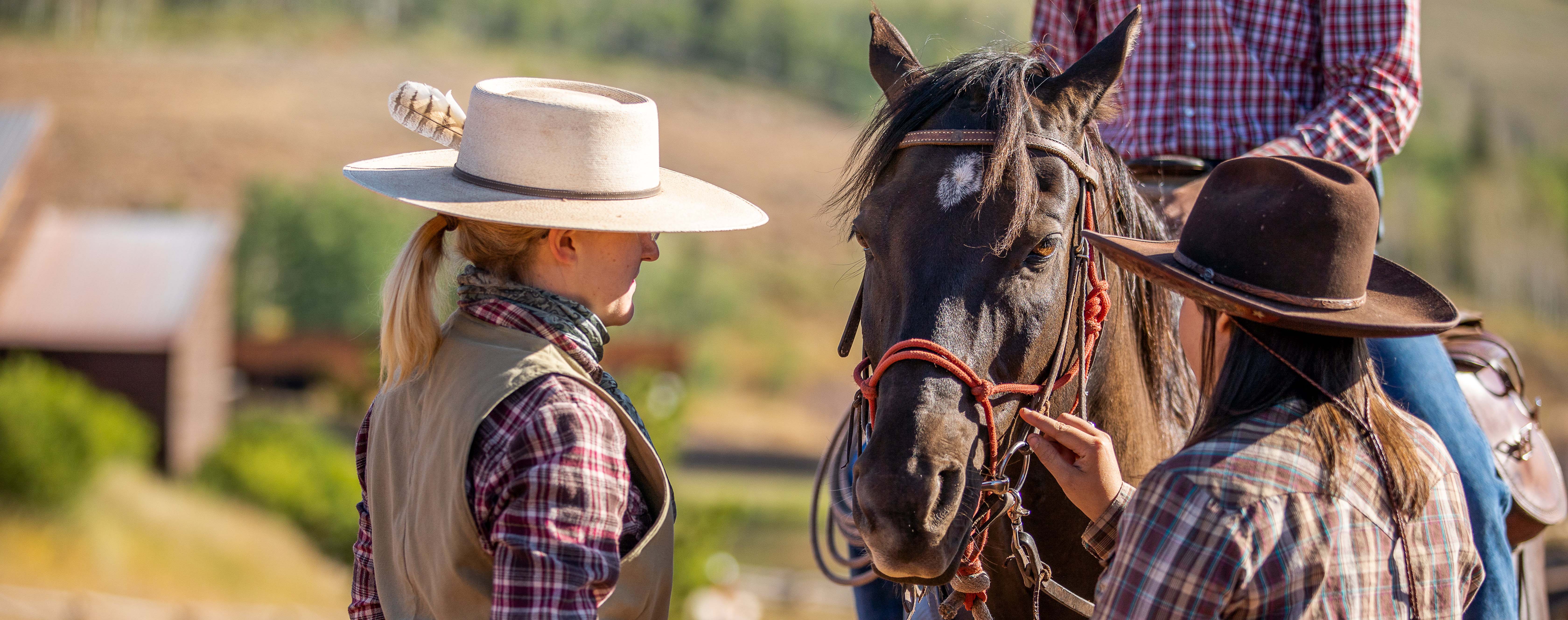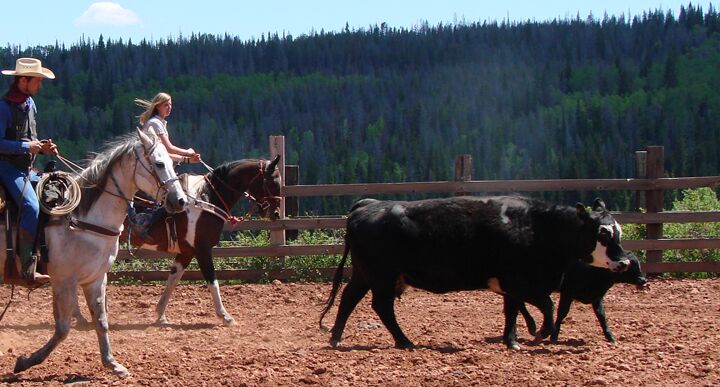
You can just picture him, the dry wind kicking up the dust, cooling the sweat on his brow. His spurs jingle as he urges his big horse forward to get the cattle rounded up for the boss. A big brim keeps his face protected from the rain when it comes and from the sun as it bakes the earth. Were you picturing a cowboy during the golden cattle-drive era of the American West or were you picturing a Spanish horseman gathering the herd for his hacienda in medieval Spain? In truth, it's a spectrum that runs the range between those two buckaroo bookends.
According to Wikipedia, a 'vaquero', which suits both the Portuguese and the Spanish languages, is a horse-mounted livestock herder of a tradition that originated on the Iberian Peninsula. Now, today, those same vaqueros are still a part of the 'doma vaquera', or the Spanish tradition of working-riding.
 It follows, then, that the Spaniards were the first horsemen on the New World, and they brought the old traditions and methods with them when they came. In 1821, the Anglo settlers in Texas started rounding up the millions of strayed and multiplying longhorns throughout the southwest. They had been herding cows for the last 250 years, so it wasn't a big jump. That's when the Texas and Californian styles of vaqueros began to emerge and develop. It was between 1821 and the invention of barbed wire after the Civil War in 1873 (which prompted large private landholdings for herding cattle instead of open ranges) that the vaqueros thrived and grew.
It follows, then, that the Spaniards were the first horsemen on the New World, and they brought the old traditions and methods with them when they came. In 1821, the Anglo settlers in Texas started rounding up the millions of strayed and multiplying longhorns throughout the southwest. They had been herding cows for the last 250 years, so it wasn't a big jump. That's when the Texas and Californian styles of vaqueros began to emerge and develop. It was between 1821 and the invention of barbed wire after the Civil War in 1873 (which prompted large private landholdings for herding cattle instead of open ranges) that the vaqueros thrived and grew.
These were the men who first rode the west end-to-end; they were rough-riding, hard-working, individualistic men who wanted the west to stay wild even as they developed gentler ways to tame their wild horses. Yes, the popular 'horse whisperer' style of natural horsemanship was established by these rough-riders; the philosophy combines the attitudes of the California vaquero with the equipment and looks of the Texas cowboy. The wide sombrero-like hats with flat brims, the long-fringe chinks, and the heavily ornamented tack all come from the 'Californio' cowboys, and their methods influenced the rest of the west as well.
The respect and honor they show for the culture, their history, and each and every horse is something we take inspiration from here at Latigo. We train our horses using methods of natural horsemanship and have many friends in that community.
Vaqueros are about a time when the west was in harmony – herding cattle to make a living because that is how to really live. They took care of the land and cherished their way of life. Do you want a taste of that? Then what are you waiting for? Latigo is waiting for you.
Book now, risk-free.
Don't forget to check Latigo Ranch on Facebook, Twitter, Pinterest, & Instagram!
<< Previous Post
>All Posts<